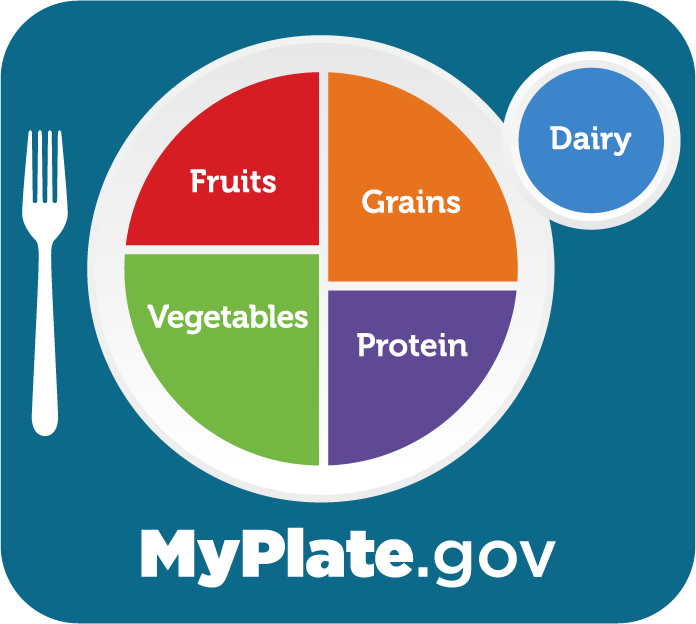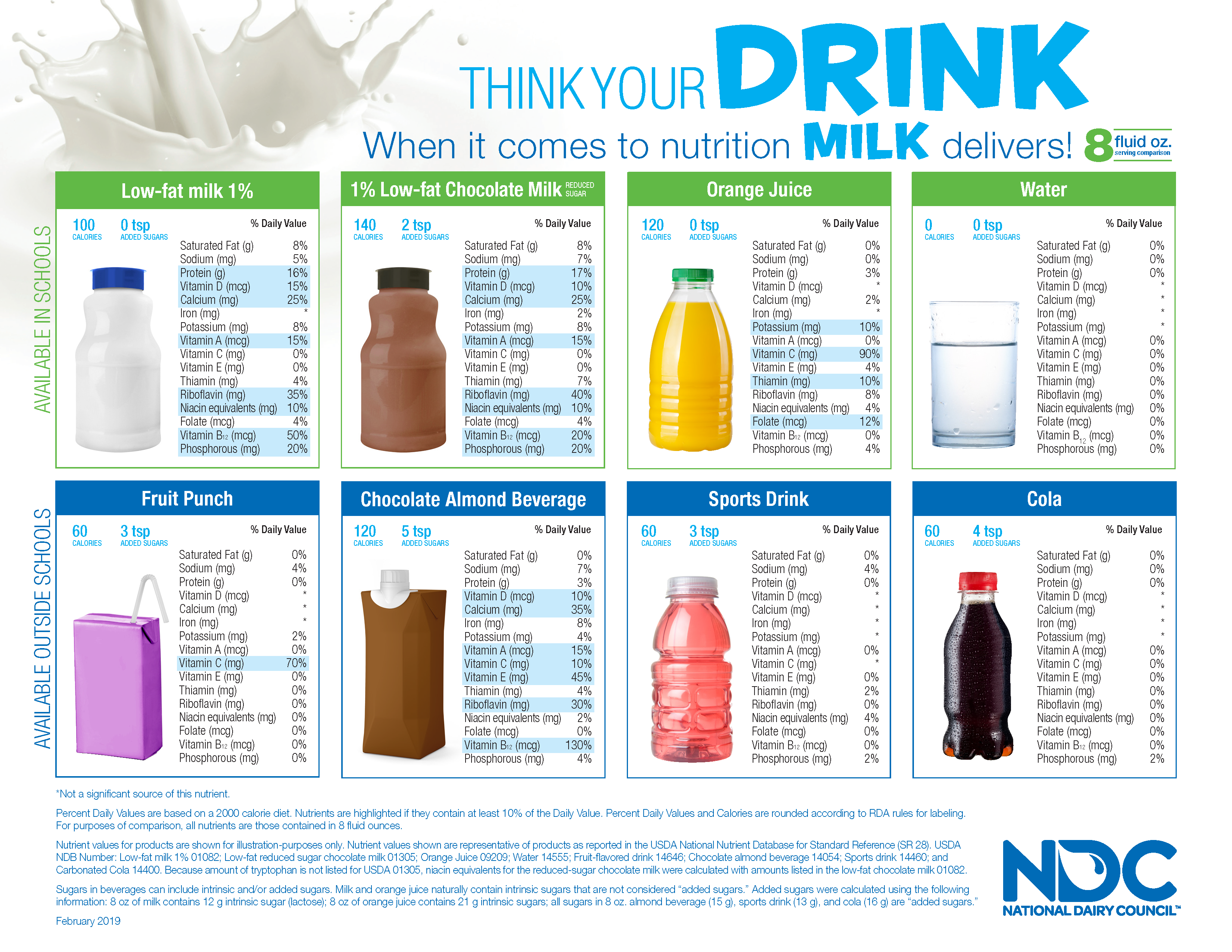The USDA MyPlate icon uses a familiar and relatable image to help us balance our diets, eating from all five food groups proportionally. MyPlate identifies each of the food groups with a different color and a proportional section of the meal setting. The icon provides a visual reminder to make half of your plate fruits and vegetables. The USDA dietary guidelines include a few more basic recommendations to help Americans make healthy food choices: eat a variety of different fruits and vegetables, make half of your grains whole grains, eat a variety of protein foods, and choose low- and nonfat dairy products. Foods with added fats and sugar should be eaten only occasionally, and processed foods should be eaten in moderation.
The dietary guidelines recognize that the number of servings an individual needs to keep their body healthy will vary by age, sex, and physical activity. In addition to energy (calories), the food we eat also provides us with a variety of vitamins and minerals. These nutrients are important for our bodies to grow and develop in a healthy way. Each kind of food provides some, but not all, of the nutrients your body needs. For this reason, it is difficult for foods in one group to replace foods in another group, and it is important to eat a variety of foods within each group. In addition, the more processed a food is, the fewer nutrients it is likely to have. Some highly processed foods like potato chips and donuts contain lots of calories but few nutrients, so it is best to limit consumption of processed foods.
Though "portion size" and "serving size" are terms often used interchangeably, there is a difference. Knowing the difference makes it easier to compare what you eat to MyPlate's daily recommendations. Portion size is the amount we eat during a meal or snack. Portion sizes can be bigger or smaller than MyPlate serving size equivalents. Serving sizes are listed on the Nutrition Facts panel of food nutrition labels, along with the calorie and nutrient content for a serving. Serving sizes may be, and often are, different from MyPlate recommendations. While a nutrition label tells us what people might typically eat, it is not a recommendation for how much we should eat. The number of servings in a package is also listed on the nutrition label. It is important to keep in mind that many packages look like single servings but contain two or more servings.
What you drink is as important as what you eat. Soda, energy drinks, and sports drinks are a major source of added sugar in American diets. Sugary drinks contain added calories which may contribute to weight gain and health and dental risks. Nutrition fact labels help us to identify the amount of sugar, calories, and nutrients in our drinks.
A healthy lifestyle also includes physical activity. Children and adolescents should get at least 60 minutes of exercise each day. Increasing activity increases health benefits.
Good health depends on good nutrition and physical activity. Using MyPlate as a guide to identify healthy food and fitness choices will provide students with an awareness of how to maintain a healthy lifestyle.
 students to create their own replica of MyPlate by sectioning off their plate with the different food groups. Include a paper circle cut-out to the side for dairy. Display the MyPlate Activity Poster or MyPlate Image so that students can reference it to create their own plate.
students to create their own replica of MyPlate by sectioning off their plate with the different food groups. Include a paper circle cut-out to the side for dairy. Display the MyPlate Activity Poster or MyPlate Image so that students can reference it to create their own plate. each student with a copy of the
each student with a copy of the